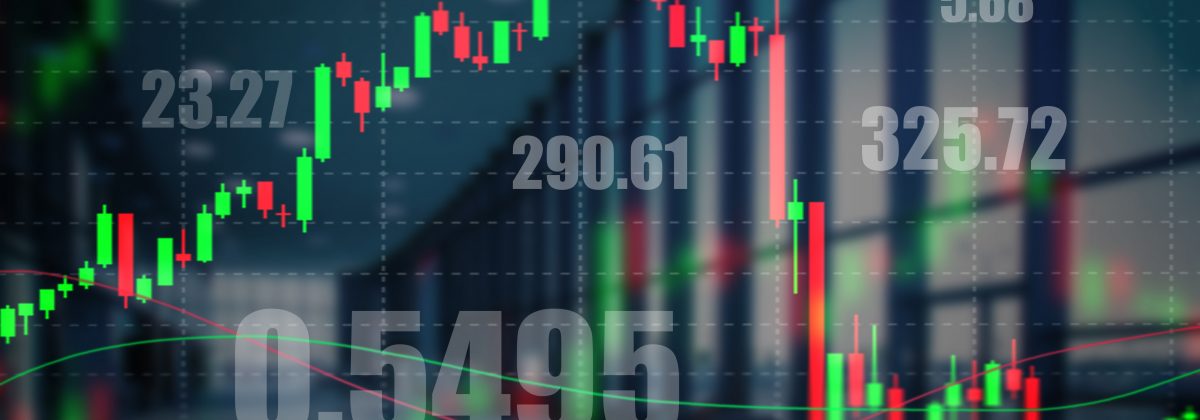5 Major Risks of Currency Trading

With huge market liquidity, the forex market is one of the top destinations for traders worldwide. The decentralised market, which can be accessed online from anywhere and at any time, offers traders plenty of flexibility to adopt their preferred trading style. However, long term success in this market depends on how well traders incorporate risk management. The forex market, like any other financial market, has its own share of risks.
With the entry bar so low and opportunities for trading so high, traders might set unrealistic expectations. It is important to keep mental note of the risks and deploy the right tools and strategies to manage them effectively.
1. Currency Risk/Exchange Rate Risk
The risk of an unfavourable change in exchange rates before a position or transaction is completed is called exchange rate or currency risk. This can happen due to many reasons. Currency rates are dependent on events occurring all around the globe. Moreover, in today’s world, everything is interconnected from trade to supply chains. An unexpected economic indicator or sudden geo-political developments can cause a ripple effect, leading to market volatility. An important risk to understand here is Interest Rate Risk. Interest rate fluctuations have a significant impact on the currency rate of a country.
Central banks adjust their interest rates to keep inflation down, and promote economic growth and employment. A hike in interest rates can cause the domestic currency to strengthen, while a lower interest rate usually leads to depreciation. This relationship between interest rates and currency rates, and the resulting differential between different currencies, causes forex rates to fluctuate.
Traders keep up with various economic releases, political developments and sudden market events worldwide to forecast changes and make decisions accordingly. An economic calendar can help traders stay abreast of such developments. Currency risk can also be tackled with proper portfolio diversification.
2. Leverage Risk
Leverage could be a great tool for forex traders, provided they use it wisely. By making a small initial investment, called “margin,” traders can enter into larger positions than what they could afford with the money in their trading account. This is a kind of “loan,” offered by brokers to traders, so that they can magnify their positions and potential returns. However, when the markets move in unexpected direction, leverage can magnify losses as well. Such fluctuations can erode entire accounts, leading to the broker issuing a “margin call.”
This is why experienced traders are careful with the use of leverage, investing only what they can afford to lose. It is wise to have a definite trading plan with a pre-decided risk/reward ratio, which helps in proper money management. Defined stop-loss and take-profit orders can help restrict losses.
3. Counterparty Risk
In forex trading, counterparty is the broker or dealer who is routing the trader’s positions to the market. In the forex market, spot and derivatives contracts are not settled through an exchange or clearing house. So, if the broker defaults, due to any reason, such as insolvency or lack of liquidity, this poses counterparty risk. This usually happens due to lack of regulation.
The best way to avoid this risk is to always trade with a regulated broker. Regulatory bodies like the UK FCA, CySEC or ESMA, keep strict tabs on regulated brokers to ensure that they comply with laws and ensure fair and transparent trading practices. And, if a broker becomes insolvent, there is legal recourse or compensation benefits for investors. It’s good to choose a jurisdiction that suits your preferences and trading style. Some other important regulatory bodies include the US SEC, ASIC and FINMA.
4. Liquidity Risk
The forex market is the largest in the world, in terms of liquidity and size. Due to high liquidity, traders can enter and exit trades with ease. This means that there is always a good number of buyers and sellers to take the other side of your trades. High liquidity also means that demand and supply of currency pairs have minimal effect on the prices.
However, periods of low liquidity also occur. For instance, during the release of an important economic release, like the US Non-Farm Payroll report, traders often close prior positions, expecting volatility. At such times, market liquidity declines. Beginner traders prefer to steer clear of trading during such times.
Also, liquidity differs from one currency pair to another. Major currency pairs, like the EUR/USD, GBP/USD or USD/JPY, are heavily traded. But, some exotic pairs, like the USD/TRY or USD/RUB, might not see high liquidity. Some emerging currencies are considered too unstable to be traded. The unstable domestic political situation or natural disasters may make these currencies less appealing to investors.
So, before choosing a currency pair, traders prefer to check and understand the country’s fundamentals properly. Otherwise they could face what is known as “country risk.”
5. Transaction Risk
Often, in the time gap of the beginning of a contract or position and its execution, the exchange rate might change, leading to changes in the return potential. This can be seen as another version of exchange rate risk, but the causes are more technical.
Forex trading occurs 24/5 in a week, which means that currency rates can change during different trading sessions. The time differential between entering a position and its settlement will always carry a transaction risk. Sometimes, latent servers from the broker’s end could lead to slow execution. By the time the order is executed, it cannot be filled at the desired price. This is known as “slippage.”
To deal with transaction risks, trader need to consider robust trading platforms like MetaTrader 4 (MT4) or MetaTrader 5 (MT5), known for their quick trade execution tools (one-click trading) and comprehensive technical and fundamental analysis. These platforms also provide ample risk management tools, like stop-loss, take-profit, limit orders and trailing stops, for all kind of strategies. Traders can even access their positions from various devices, such as smartphones or tablets, to stay abreast of market developments, no matter where they are.
Risks are a part of trading financial assets. As long as a trader is equipped to handle them, they could have minimal effect on the outcomes.
Reference Links
- https://corporatefinanceinstitute.com/resources/knowledge/trading-investing/currency-risk/
- https://www.investopedia.com/articles/investing/111214/top-5-forex-risks-traders-should-consider.asp
- https://medium.com/daily-finance/8-major-risks-that-you-should-evaluate-in-forex-trading-45dc7ea1c043







